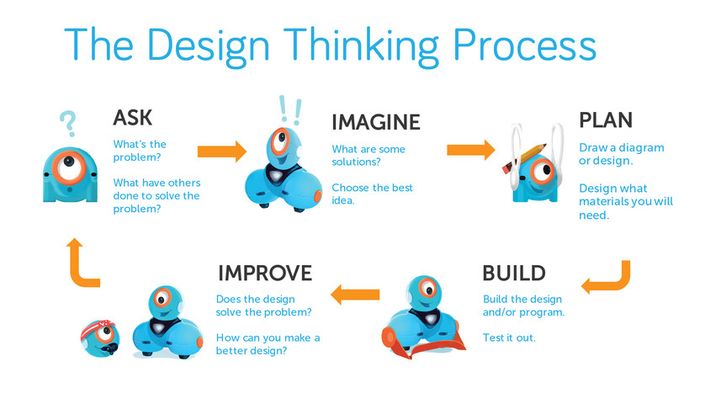
D6: Assessment - Complex Solutions for the Classroom
Description
Level D, Lesson 6: In this lesson, students will work in small groups, using Dash to solve a classroom problem. Students will use the Design Thinking Process to design an accessory and code for Dash as a solution. Then they will plan, build, test and retest.
Objectives
- Brainstorm solutions to a classroom problem.
- Demonstrate and use the coding concepts introduced in Level D to program a set of instructions for Dash to follow. These concepts include: nested loops, event handlers, and conditionals.
- Determine and/or clarify the meaning of terminology related to coding and design.
- Apply the steps of the Design Thinking Process to construct a new accessory for Dash.
- Document the Design Thinking Process in their Design Thinking Group Workbook.
- Explain their ideas with peers and teachers.
- Create an engaging presentation about their design to share with the class.
Curriculum Connections Summary
- Ontario - Mathematics - Algebra (Coding)
- British Columbia - ADST
- Alberta - ICT
- Nova Scotia - ICT
Robots and Accessories


Other Supplies
- Scratch paper (or work can be done online)
- Printouts of Design Thinking Workbook (1 per group)
- Different-colored crayons/markers/pencils (1 per student)
- Clipboards
- Pencils (1 per student)
- Recycled materials (e.g., cardboard, paper plates, spoons, rubber bands, scratch paper, foil, straws, folders)
- Tablets - See Tablet Compatibility
Find Out More

Open their eyes to how the world works, coding ideas into adventures.
- Buy Dash and Dot
- Free Apps for Apple and Android
- Tablet Compatibility
- View All Lessons
- Subscribe for Premium Co-Curricular Lessons
- Start a Robotics Coding Club
- Register for the Worldwide Robotics Competition

